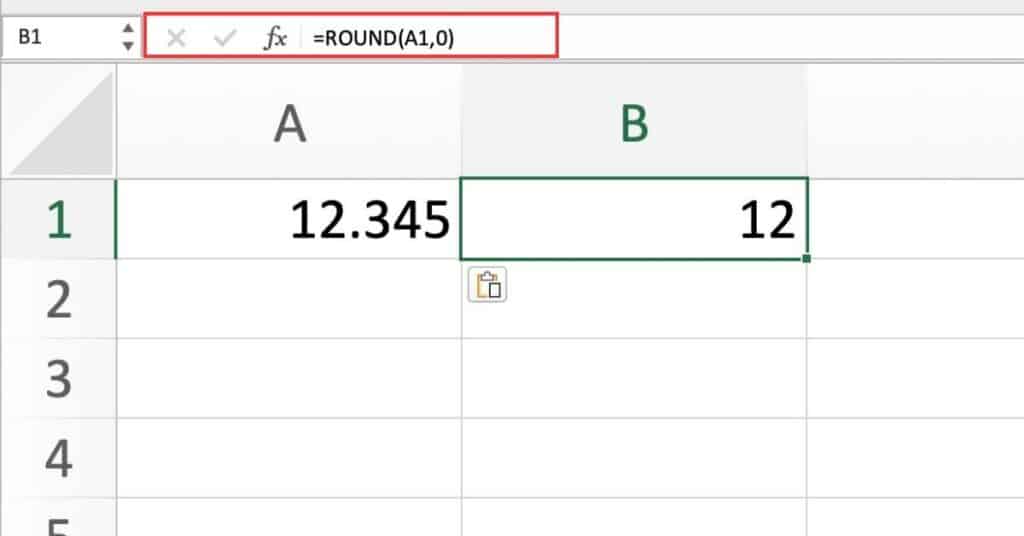Excel ROUND function is a mathematical function used to round numbers to a specified number of digits. This function is used widely in financial modeling, accounting, and other mathematical operations. It is an essential tool to maintain accuracy in calculations and presenting data in a readable format.
Excel ROUND Function Summary
Excel’s ROUNDUP function lets you round up a number to the nearest integer. To use ROUNDUP in a cell, type =ROUNDUP(number, num_digits), where ‘number’ is the number you want to round up and ‘num_digits’ is the number of digits you want to round it to. Simply follow this syntax: the ROUNDUP function, the cell address of the number to be rounded up, and the desired number of digits. In this post, we’ll explain how to use Excel’s ROUNDUP function and provide some helpful examples.
ROUND Function Purpose
The Excel ROUND function is used to round numbers to a specified number of digits. It is used to eliminate decimal points and make the numbers more manageable for users. It helps to simplify complex data, create charts, and present data in a more readable format.
ROUND Function Arguments
The Excel ROUND function takes two arguments: the number to be rounded and the number of digits to which the number should be rounded.
ROUND Function Return Value
The Excel ROUND function returns a rounded number to the specified number of digits.
ROUND Function Syntax
The syntax of the Excel ROUND function is:
=ROUND(number, num_digits)Excel ROUND Function Examples
I’ll explore several examples of how to use the ROUND function in various scenarios to help you make the most of this powerful tool.
Rounding to nearest integer
Suppose we want to round 12.345 to the nearest integer with is in cell A1.
We would need the following formula:
=ROUND(A1,0)
As you can see this will return 12. This example rounds the number to the nearest integer.
Rounding to nearest tenth
Suppose we want to round 2.345 which is in cell A1 to the nearest tenth.
We would need the following formula:
=ROUND(A1,1)In this example the function will return 12.3. This example rounds the number to the nearest tenth.
Rounding up
Suppose we want to Rounding up 12.345 which is in cell A1 .
We would need the following formula:
=ROUND(A1,2)In this example the function will return 12.35. This example rounds the number up to the nearest hundredth.
Rounding down
Suppose we want to Rounding down 12.345 which is in cell A1.
We would need the following formula:
=ROUND(A1,-1)In this example the function will return 10. This example rounds the number down to the nearest ten.
ROUND Function Options: Digits and Rounding Position
Here’s a table of the num_digits parameter in the ROUND function:
| num_digits | Syntax | Description |
|---|---|---|
| 0 or omitted | ROUND(number,0) | Rounds to nearest integer |
| 1 | ROUND(number,1) | Rounds to nearest 0.1 |
| 2 | ROUND(number,2) | Rounds to nearest 0.01 |
| 3 | ROUND(number,3) | Rounds to nearest 0.001 |
| -1 | ROUND(number,-1) | Rounds to nearest 10 |
| -2 | ROUND(number,-2) | Rounds to nearest 100 |
| -3 | ROUND(number,-3) | Rounds to nearest 1000 |
Note that positive values for num_digits round to the left of the decimal point, while negative values round to the right of the decimal point.
Other rounding functions in Excel
- ROUNDUP: rounds a number up to a specified number of digits.
- ROUNDDOWN: rounds a number down to a specified number of digits.
- MROUND: rounds a number to the nearest multiple of a specified number.
- CEILING: rounds a number up to the nearest integer or multiple of a specified significance.
- FLOOR: rounds a number down to the nearest integer or multiple of a specified significance.
- TRUNC: truncates a number to a specified number of digits without rounding.
Excel ROUND Function Notes:
- The num_digits argument must be an integer value.
- If the num_digits argument is negative, the number is rounded to the left of the decimal point.
- If the num_digits argument is omitted, the Excel ROUND function will round the number to the nearest integer.

Pingback: Excel ROUNDDOWN Function - Sheet Leveller
Pingback: Excel ROUNDUP Function - Sheet Leveller